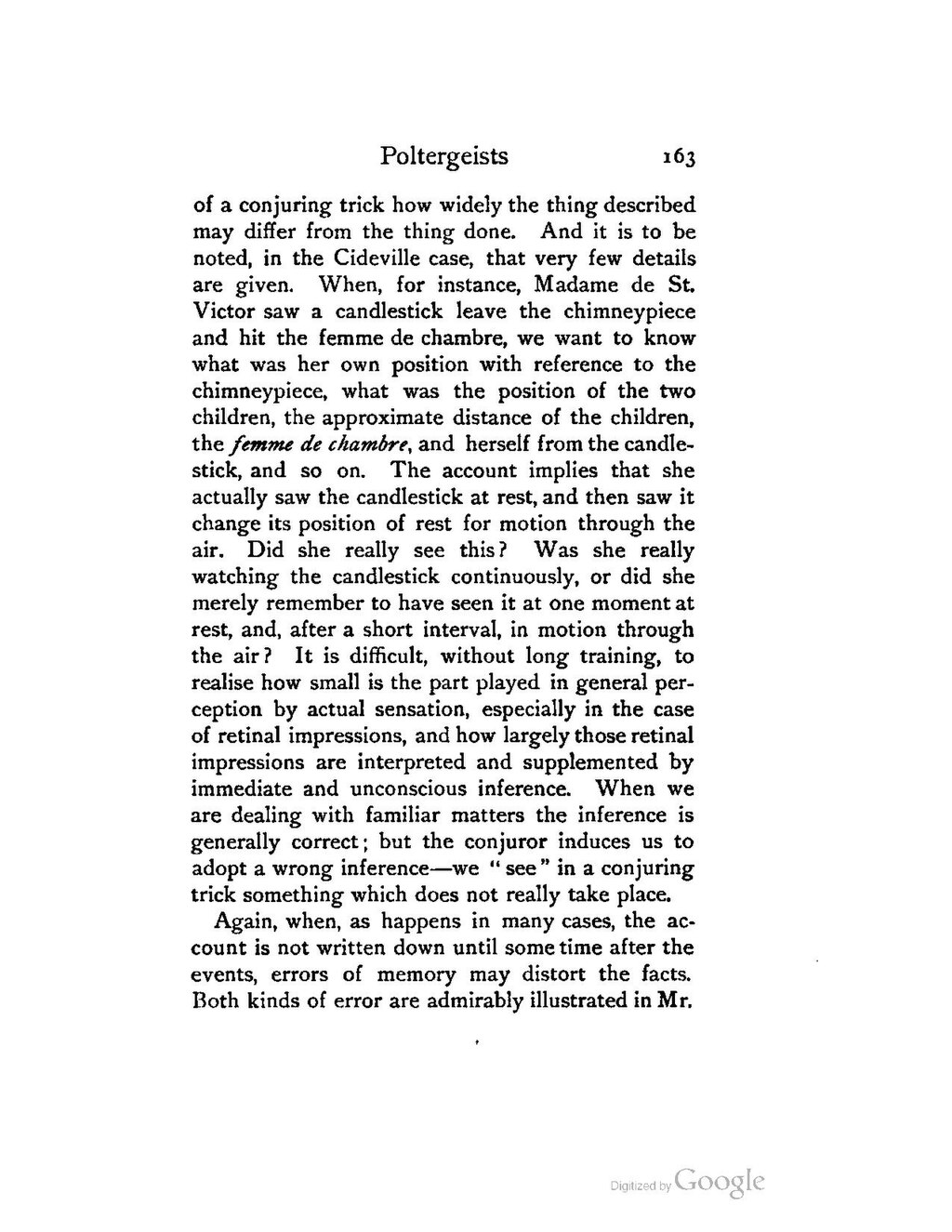of a conjuring trick how widely the thing described may differ from the thing done. And it is to be noted, in the Cideville case, that very few details are given. When, for instance, Madame de St. Victor saw a candlestick leave the chimneypiece and hit the femme de chambre, we want to know what was her own position with reference to the chimneypiece, what was the position of the two children, the approximate distance of the children, the femme de chambre, and herself from the candlestick, and so on. The account implies that she actually saw the candlestick at rest, and then saw it change its position of rest for motion through the air. Did she really see this? Was she really watching the candlestick continuously, or did she merely remember to have seen it at one moment at rest, and, after a short interval, in motion through the air? It is difficult, without long training, to realise how small is the part played in general perception by actual sensation, especially in the case of retinal impressions, and how largely those retinal impressions are interpreted and supplemented by immediate and unconscious inference. When we are dealing with familiar matters the inference is generally correct; but the conjuror induces us to adopt a wrong inference—we "see" in a conjuring trick something which does not really take place.
Again, when, as happens in many cases, the account is not written down until some time after the events, errors of memory may distort the facts. Both kinds of error are admirably illustrated in Mr.
